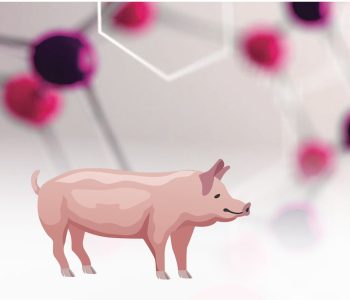Proper feeding of both sows in the breeding herd and boars is essential to ensure health and reproductive performance in pig production. However, the increasing use of oxidized fats in the diet of the breeding herd, under the assumption of reducing feeding costs, raises concerns due to its potential impact on health and reproduction.
Oxidized fats and oxidative stress in the reproductive health of sows
Figure 1. Levels of vitamins E and C, glutathione peroxidase (GPx), and total superoxide dismutase (SOD) in breeding sows according to oil type and antioxidant addition. Modified from Su et al., 2017.
Oxidized lipids in the diet can increase lipid peroxidation levels in the tissues of sows, leading to the accumulation of oxidation products and damage to cell membranes (Luo et al., 2018), directly impacting:
Moreover, oxidative stress can affect the endocrine function of sows, altering the production and release of reproductive hormones.
Exposure to oxidized fats may alter gene expression related to hormonal synthesis and metabolic function in sows, which can further compromise their reproductive health (Valle et al., 2009).
These findings highlight the importance of avoiding the use of oxidized fats in the diet of breeding sows to preserve their reproductive health.
Impact of oxidized fats on sow fertility
Sows fed diets high in oxidized fats show a significantly lower conception rate compared to those fed diets made with high-quality (non-oxidized) fats.
- Negative disruption of the animals’ hormonal homeostasis, altering the production and release of key hormones involved in reproduction, such as estradiol and progesterone.
- Reduced feed intake during lactation, compromising the body condition of the female, which in turn leads to lower oocyte viability and consequently reduced fertility in the subsequent reproductive cycle (Figure 2).
- Inflammatory responses in the body, which can in turn affect the health of the reproductive tract and the viability of eggs and sperm.
Impact of oxidized fats on offspring quality
Offspring quality is crucial for the success of pig production, and maternal nutrition plays a fundamental role in their development.
The consumption of oxidized fats by breeding sows has repercussions on offspring quality, both in terms of viability and productive performance.
It has been reported (Xu et al., 2021) that prenatal exposure to oxidized fats can affect fetal development and neonatal viability in pigs, due to:
These impacts on the quality of offspring from sows fed diets high in oxidized fats can be partially attributed to:
- Toxic compounds that may negatively affect fetal development, interfering with the formation of vital organs and systems.
- Increased vulnerability of piglets to diseases and metabolic disorders during the postnatal stage.
Oxidized fats in the reproductive health of boars
The mechanisms behind the negative effects of oxidized fat consumption in boars are not yet fully understood, but several impacts have been reported, including:
-
Oxidative stress in the body, which affects cellular health and the function of reproductive organs.
-
Disruption of hormonal synthesis and testicular function, resulting in reduced semen production and quality.
-
Fat oxidation interfering with the synthesis of essential lipids needed for cell membrane integrity, thereby affecting sperm function.
Implications for the swine industry
Oxidative stress induced by the consumption of oxidized fats in the diet of sows and boars leads to reduced reproductive and productive efficiency for the swine industry.
Therefore, there is a clear need for increased attention to:
It is crucial to implement antioxidant supplementation not only to reduce oxidation in the feed but also to mitigate oxidative reactions in the animal caused by other stress factors.
Therefore, more research is needed to deepen the understanding of the mechanisms behind the adverse effects of oxidized fats on reproductive indicators in sows and boars, as well as to develop effective strategies to mitigate these effects.
Conclusions
